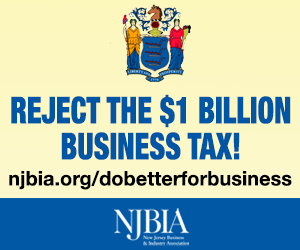National Congressional Elections, 2022: The Democrats Still Can Prevail

In politics, the conventional wisdom is often not very wise. And it is often based on superficialities.
Current political conventional wisdom is that the Republicans are a virtual certainty this November to capture majorities of both the United States House of Representatives and the Senate. The PREDICTIT report of political betting markets, which is often the coin of the realm among the Washington political chattering class, has installed the GOP as the overwhelming favorite in the races for Congressional control.
These forecasts are grounded on the abysmally low approval numbers of Democratic President Joe Biden at the present time. Yet the pundits who have declared national victory for the Republicans in Congressional Campaign 2022 are ignoring one most significant recent development.
The margin in the Congressional generic ballot between the Republican and Democratic Parties, has been reduced to a virtual dead even status. The Real Clear Politics survey has the Republican advantage in the average of reported Congressional generic ballot polls reduced to only one point. In three such polls released yesterday, the Quinnipiac Poll has the GOP leading by one point, while the Politico/ Morning Consult and the Economist/YouGov polls actually have the Democrats leading by three and five points, respectively.
Any deep dive into the polls can explain the closeness of this margin. The mood of the electorate is one of disappointment regarding the Democrats and fear of the Republicans.
The public disappointment in Biden and the Democrats is due to their handling of the economy and Covid. The fear factor of the Republicans is attributable to the fact that a majority of the public believes that the future of democracy in America is endangered and that the Republicans and Donald Trump, still a reviled figure, bear the blame.
Yet future events could change dramatically the national political landscape. While the sense of electorate disappointment in Biden and the Democrats may subside, the fear of Republicans may very well worsen.
Favorable news on both the economic and Covid fronts could cause a major abatement in the negative perceptions of the electorate towards the incumbent Democratic president and the Congressional controlling Democratic Party. Just this morning, the New York Times reported an apparent peaking and flattening of the curve in new Omicron cases. This is good health news for the nation and healthy political tidings for Biden and the Democrats.
The political impact of the current economy is a bit more murky. As Washington wags are wont to say, the economy is improving, but families don’t know it yet. While economic growth remains very strong, inflation remains a serious concern at kitchen tables across America, particularly regarding food and gasoline prices.
Yet it must be emphasized that the current inflation is not nearly as virulent and malignant nor as rooted in organic economic fundamentals as was the inflation of the late 1970s and early 1980s. The latter inflation, which was a major factor in dooming Jimmy Carter to defeat in his reelection campaign of 1980 was double-digit and accompanied by deep unemployment, resulting in combined inflation- unemployment “misery indexes” which reached as high as 21 percent. The current annual 7 per cent inflation is not nearly as high and is not accompanied by severe and steadily rising unemployment.
The inflation of the 1970s and early 1980s was a result of both runaway monetary growth by the Federal Reserve Board and huge jumps in oil prices in 1979 in the wake of the Iranian revolution. These organic economic factors made the inflation of that period much more severe and enduring than that of 2021-2022.
By contrast, the present inflation is not due to any economic or foreign policy failure, but rather a natural result of the reentry of consumers into the market place after the initial and worst period of the Covid. During that initial period, consumers purchased a minimal amount of household, food, and fuel products and instead used their dollars to acquire Covid-related services. The post-initial Covid period consumer reentry into the marketplace was characterized by an overwhelming sudden increase in the purchase of such household, food and fuel products. This huge jump in the demand for products as opposed to services naturally resulted in the inflation we now experience.
Economists virtually universally agree that in sharp contrast to the inflation of the 1970s and 1980s, the current inflation is most likely to have no further significant rate of increase nor endure beyond 2022. The question politically is when will the inflation begin to substantially decline. If meaningful inflation subsidence begins before the beginning of the fourth quarter of 2022, there will also be a concurrent substantial subsidence in the sense of disappointment of the electorate with the president. Such an improvement in the public perception of Biden will result in an increasing possibility of Democrats retaining control of both Congressional houses.
There is another series of economic events likely to begin during the period between Labor Day and Election Day of 2022: the groundbreaking of billions of dollars of infrastructure projects pursuant to the $1.2 trillion Bipartisan Infrastructure Framework (BIF) passed by the Democratic Congress and signed into law by President Biden in November, 2021. The placement of “shovels in the ground” on a massive scale cannot help but have a major salutary impact on the electoral fortunes of Democratic House and Senate incumbents.
While events in the economic and health spheres could improve the favorability of the Democratic 2022 Election Day outlook, there is an increasing likelihood that two very possible sequences of events could have a disastrous impact on the Republican chances for capture of Congressional control.
The first would be the televising of prime-time hearings of the House of Representatives Committee investigating the insurrection of January 6, 2021. Further dramatic revelations of responsibility for the insurrection on the part of Trump himself and members of his administration could intensify the public fear factor of the Republicans as the anti-democracy party.
Even more explosive would be the very possible indictment of Donald Trump in Fulton County, Georgia for conspiracy to steal election votes. Such an indictment would have the potential to destroy the GOP national House and Senate campaign efforts.
Finally, there is the growing discussion of the possible displacement of Kevin McCarthy by Jim Jordan as the next Speaker of the House. In the 1990s, the Democrats depicted Newt Gingrich as the devil incarnate and attempted to nationalize their Congressional campaigns and run them with Newt Gingrich as their target. This effort failed, but Newt Gingrich was an absolutely benign and warm, cuddly, and fuzzy figure as compared with Jim Jordan. The latter is the Sonny Liston of national politics. Like Liston, in a political sense, Jim Jordan is an absolute congenital thug whose very image could cause the public fear factor of the GOP to skyrocket.
I am not predicting either a national Republican or Democratic victory in the House or Senate races this November. It is much too early for that. All I am saying is that there are very possible events that could result in a most plausible scenario for Democrats to retain control of both the House and Senate. I am not a gambler, but if I were, I would never bet on Congressional Elections 2022.
Alan J. Steinberg served as regional administrator of Region 2 EPA during the administration of former President George W. Bush and as executive director of the New Jersey Meadowlands Commission.









This round of inflation was caused by the foolhardy response to COVID–quarantining the healthy and stopping the economy. Followed by printing money and flooding the market. When you print more money and give it away, each dollar becomes less valuable, that is inflation. We have been hearing for a year that this inflation is “temporary”, I suspect we will still be hearing that next year.
I’m not sure how accurate the statement on the current rate of inflation not being as much due to economic policy is. Between 2008 and 2020, the Fed’s quantitative easing program net a balance sheet of ~$4 trillion, with 2017 to somewhat near 2020 actually seeing the assets being gradually (very gradually) reduced under Yellen.
Then between 2020 to the end of 2021, the Fed’s balance sheet exploded to nearly $9 trillion due to aggressive QE in response to the pandemic. We already know that QE can cause inflation if its leveraged too heavily and I’d say doubling the Fed’s balance sheet in about two years, an increase amount equivalent to the amount collected over a decade before the pandemic, is pretty heavy.
I’d want to see which economists universally agree that the economy will be fine and that inflation won’t endure past 2022, because we saw how “optimistic” the Fed was through 2021 only to end up admitting they were actually quite off track and had been looking at things through rose-tinted glasses. The reality is that we’re in for hard times and the sooner we stop lying to ourselves about how everything is fine or will be fine, the better we can actually start preparing and work towards productive economic recovery.